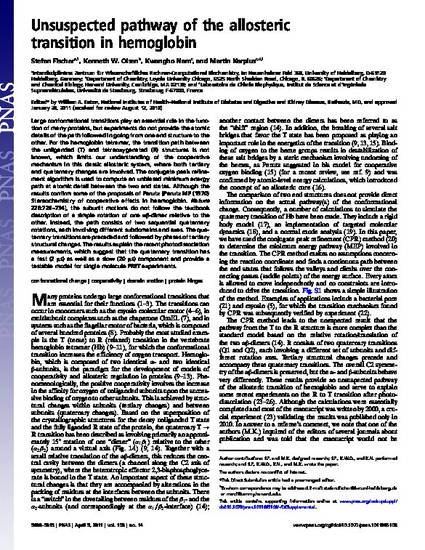
Large conformational transitions play an essential role in the function of many proteins, but experiments do not provide the atomic details of the path followed in going from one end structure to the other. For the hemoglobin tetramer, the transition path between the unliganded (T) and tetraoxygenated (R) structures is not known, which limits our understanding of the cooperative mechanism in this classic allosteric system, where both tertiary and quaternary changes are involved. The conjugate peak refinement algorithm is used to compute an unbiased minimum energy path at atomic detail between the two end states. Although the results confirm some of the proposals of Perutz [Perutz MF (1970) Stereochemistry of cooperative effects in haemoglobin. Nature 228:726–734], the subunit motions do not follow the textbook description of a simple rotation of one αβ-dimer relative to the other. Instead, the path consists of two sequential quaternary rotations, each involving different subdomains and axes. The quaternary transitions are preceded and followed by phases of tertiary structural changes. The results explain the recent photodissociation measurements, which suggest that the quaternary transition has a fast (2 μs) as well as a slow (20 μs) component and provide a testable model for single molecule FRET experiments.
© National Academy of Sciences of the United States, 2011.

Author Posting. © National Academy of Sciences of the United States, 2011. This article is posted here by permission of the National Academy of Sciences of the United States for personal use, not for redistribution. The article was published in PNAS, Volume 108, Issue 14, 2011. http://dx.doi.org/10.1073/pnas.1011995108